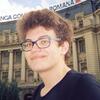The Awakening of an Active Galactic Nucleus in Real Time

In December 2019, researchers at the Zwicky Transient Facility (ZTF) identified unusual nuclear variability in an early-type galaxy, SDSS J133519.91+072807.4 (hereafter SDSS1335). This galaxy, which had previously shown no remarkable characteristics, unexpectedly began to brighten rapidly. The ZTF alert stream has historically been quick to identify many exciting transient phenomena, but this appeared to be different from anything seen before. For example, while events such as supernovae brighten and dim over the course of a few weeks, the core of SDSS1335 continues to vary in intensity to this day.

Now, a study led by Paula Sánchez-Sáez details further investigations, as well as their own conclusions regarding the origin of this nuclear activity. Indeed, they believe that the core of SDSS1335, which has been dormant for over 20 years, has reawakened as an active galactic nucleus (AGN). AGNs are associated with supermassive black holes (SMBHs) that emit vast amounts of radiation. This emission primarily arises from the accretion disk, where vast amounts of material spiral into the black hole, heating up and emitting intense thermal radiation.
Their study is primarily focussed on what they deem to be the two primary possibilities in a scenario like this. The aforementioned awakening of an AGN, or a tidal disruption event (TDE) occurring near or even involving the nucleus of SDSS1335. However, they favour the former interpretation, for a couple of reasons.
For example, the light curve following the peak of the event does not conform to a typical, smooth power-law decay observed in TDEs, and many other transient events for that matter. Instead, there appears to be more complex variation in observed brightness, notably rebrightening even after peak emission. Furthermore, their spectra demonstrated no evidence of significant broadening, which is typically seen in TDEs. In contrast, AGNs are often observed with and without broad lines. Finally, they discuss the [OIII] line flux, describing it as quite intense and still growing They particularly highlight the [OIII]λ5007 forbidden line, whose presence is often regarded as an indicator for AGN activity.

The study notes that while these detections are exciting, there is yet no fully conclusive evidence as to the source of this emission. The possibility remains that we are observing an unusually long, exotic TDE. They likewise note that some of the discussed features of this event have been sighted in confirmed TDEs, such as rebrightening and lack of broad spectral features. Based on the data presently available, it is not yet possible to state this conclusively.
That said, noting that the possibility that this is an awakening nucleus, we can anticipate certain stages of its upcoming evolution. The study proposes continued multi-wavelength monitoring of the system, with a focus on the x-ray regime. This is to detect the formation of features such as a corona, an ultra-hot region of ionised gas nearer to the SMBH, which would be identified by hard x-ray emission. Studies within the mid infrared could investigate the properties of the dust and gas surrounding the nucleus, which could further support this conclusion. Observing these characteristics would support the hypothesis that SDSS1335 has transitioned from a dormant state to an AGN.
--
Journal Source: P. Sánchez-Sáez et al, SDSS1335+0728: The awakening of a ∼ 106 M⊙ black hole, Astronomy and Astrophysics, (2024), DOI: https://doi.org/10.1051/0004-6361/202347957
Additional Sources: https://www.eso.org/public/news/eso2409/
Cover Image: ESA/Hubble
